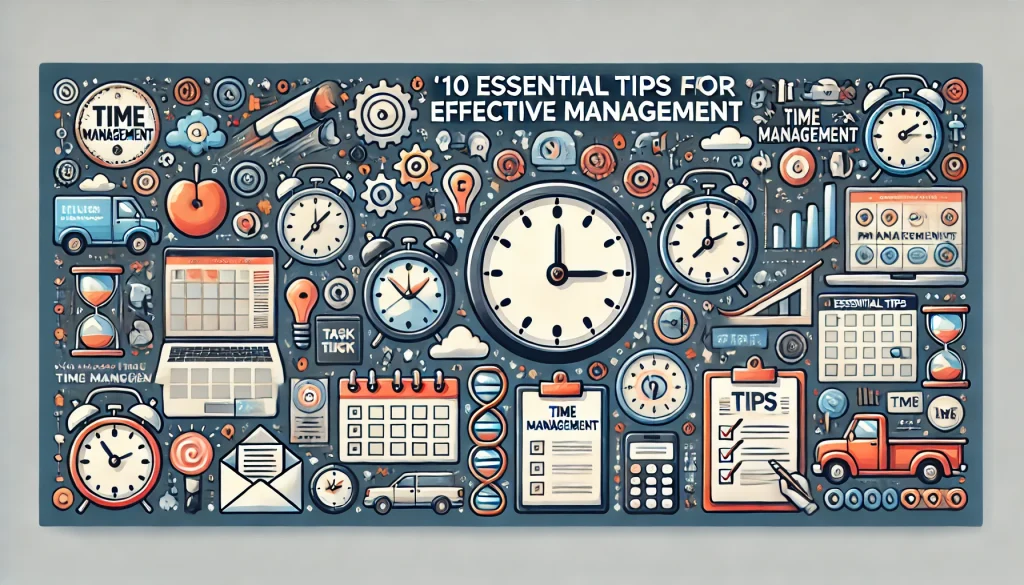
Mastering Productivity: A Complete Guide In the fast-paced world of today, success on both a personal & professional level depends on mastering productivity. This article explores several tactics that people can use to increase their productivity, guaranteeing that they not only achieve their objectives but also preserve a positive work-life balance. Anyone can develop a more productive lifestyle by concentrating on delegating responsibilities, avoiding multitasking, minimizing distractions, setting clear goals, prioritizing tasks, making a schedule, taking breaks, and reflecting & adjusting.
Effective productivity is based on having well-defined goals. People establish a road map that directs their actions & choices when they express SMART goals—specific, measurable, achievable, relevant, and time-bound. This clarity gives direction and aids in the removal of ambiguity.
Instead of saying something like “get better at writing,” for example, a clear goal would be “to write 500 words every day for the next month.”. In addition to making the goal more reachable, this specificity enables progress monitoring over time. Clear goals also act as a motivating tool. Those who are able to envision their goals and comprehend the necessary actions to reach them are more likely to remain dedicated and focused. This dedication can be strengthened even more by putting goals in writing, which turns intangible concepts into concrete objectives.
People can keep moving forward & adjust to changing conditions by routinely evaluating & modifying these goals as needed, making sure that their output stays in line with their changing goals. Setting effective task priorities comes after establishing clear goals. When it comes to their contribution to reaching one’s objectives, not all tasks are created equal. One well-known tool that helps people identify which tasks need to be done right away and which can wait or be assigned is the Eisenhower Matrix, which groups tasks according to importance & urgency.
People can make sure that their efforts produce the biggest results by concentrating on high-priority tasks first. Setting priorities for your work also makes you feel more accomplished. Finishing important tasks can give you a mental boost and strengthen your productivity habit. Regularly reevaluating priorities is crucial when new tasks arise or situations alter.
With this dynamic approach, people can stay adaptable & sensitive to their surroundings while making sure they are constantly focusing on the things that really matter. Keeping a productive schedule throughout the day requires careful planning. A schedule serves as a guide for allocating time, assisting people in maintaining organization and task focus. People can prevent feeling overburdened & guarantee consistent progress by dividing more complex projects into smaller, more manageable tasks and allocating particular time slots for each.
Keeping track of deadlines and visualizing the day ahead can be facilitated by using digital tools or conventional planners. A well-planned schedule also accounts for personal obligations and downtime in addition to work-related duties. Maintaining long-term productivity requires striking a balance between personal and professional obligations. People can avoid burnout and stay motivated by planning breaks and recreational activities in addition to work-related tasks. A more individualized approach to productivity can be achieved by routinely evaluating & modifying the schedule in light of performance and energy levels.
Research indicates that multitasking can actually reduce productivity in a time when it is frequently hailed as a sign of efficiency. People’s cognitive resources are divided when they try to multitask, which impairs concentration and increases mistakes. Focusing on one task at a time is more effective than attempting to complete them all at once. The results of this single-tasking strategy are frequently of higher quality and enable deeper engagement with the task at hand. Also, avoiding multitasking can result in better time management. By allocating unbroken time blocks to particular tasks, people can finish them faster and more precisely.
In addition to increasing output, this targeted strategy promotes a feeling of accomplishment when tasks are finished. Accepting single-tasking promotes mindfulness in work practices, enabling people to focus entirely on their tasks and eventually produce better outcomes. Reducing outside distractions is essential for sustaining concentration and increasing output. Distractions abound in our hyperconnected world, whether they come from email alerts, social media notifications, or even background noise.
The first step in lessening the effects of personal distractions is identifying them. Focus levels can be considerably raised by setting up a specific area that isn’t disturbed. This could entail clearing the workspace or turning off background noise with noise-canceling headphones. Establishing limits with technology can also reduce distractions.
Setting aside specified times of day to check social media or emails can help you avoid continual disruptions. During working hours, using applications that block distracting websites can also be helpful. By intentionally establishing a focus-friendly environment, people can improve their capacity to focus on assignments and, eventually, increase their level of productivity. Regular breaks are crucial for sustaining high levels of productivity, despite the fact that this may seem counterintuitive.
Working for long stretches of time without taking breaks can cause mental exhaustion and poor performance, according to research. Short breaks during the workday enable people to rejuvenate their bodies & minds, which enhances their ability to concentrate and be creative when they return to their tasks. In order to encourage sustained productivity, methods like the Pomodoro Technique—in which workers work for 25 minutes and then take a 5-minute break—can be especially useful. Also, breaks offer a chance for introspection and mental clarity.
When people take a break from their work, they can process information and come up with new ideas. In addition to improving cognitive function, physical activity during breaks can lower stress levels. By acknowledging the value of breaks as a component of a productive routine instead of seeing them as disruptions, people can establish a more balanced approach to work and relaxation. One of the most effective ways to increase productivity is to assign tasks to others, especially in group settings. Many people battle the idea that they have to do everything themselves, but this way of thinking can result in burnout and reduced productivity.
By acknowledging the strengths of coworkers or team members, people can delegate tasks that complement their knowledge and abilities. This promotes cooperation and teamwork in addition to reducing workload. Effective delegation necessitates open communication regarding deadlines and expectations. Giving the task at hand enough context guarantees that everyone in the team is fully aware of their roles and responsibilities. Also, giving others the freedom to finish assigned tasks empowers them and promotes team members’ professional development.
Instead of giving up control, people can embrace delegation as a way to increase productivity and build a more effective workflow that is advantageous to all parties. The last phase in becoming a productivity expert is to evaluate performance and make the required corrections. By routinely evaluating which tactics are effective and which require development, people can gradually improve their methods.
In reaction to shifting conditions or obstacles encountered while pursuing objectives, this reflective practice promotes ongoing learning and adaptation. Over time, increased productivity may result from modifying tactics in response to reflection. For example, if specific time management strategies aren’t working as planned, trying out other approaches might reveal better ones. Asking mentors or peers for their opinions can also yield insightful information about areas that need work. Throughout their personal and professional journeys, people can overcome challenges and sustain high levels of productivity by cultivating a growth & adaptability mindset.
To sum up, increasing productivity is a continuous process that calls for dedication and intentionality in a variety of approaches, from establishing specific objectives to evaluating one’s own performance. People can create a setting that supports reaching their goals and preserving their sense of balance in their lives by carefully putting these practices into practice. Adopting these values promotes general fulfillment & well-being in both the personal and professional spheres in addition to increasing productivity.




